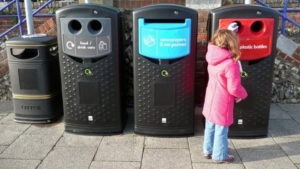Here at Take My Scrap Car, we have a strong interest in all aspects of recycling across the board. While it may by car recycling we ourselves specialise in, we’re interested in anything connected with reuse and recycling across the board. Which is why a recent article caught our eye, detailing a few of the most common recycling mistakes most households make.
 As far as the experts are concerned, there’s a big difference between recycling and recycling properly. The latter taking just a little more thought and attention, not to mention acknowledgement of the following five common recycling mistakes:
As far as the experts are concerned, there’s a big difference between recycling and recycling properly. The latter taking just a little more thought and attention, not to mention acknowledgement of the following five common recycling mistakes:
- Not flattening all materials
First of all, for any recycling program to be effective, all waste items across the board need to be flattened as much as possible. From carboard boxes to milk cartons to cans and so on, it’s important to remember that anything that isn’t compressed takes up more space than it needs to. Which means more space needed for transportation, less waste fitting in available bins and a more difficult, expensive and inefficient recycling process in general. As a rule of thumb – if it can be flattened, it should be flattened.
- Putting dirty paper in cardboard containers
While paper and cardboard can be recycled with the most efficiency of just about any materials, this doesn’t apply to dirty or contaminated paper. Particularly in the case of food waste, dirty paper and cardboard waste needs to be separated from cleaner paper and cardboard. Worse still, when you put dirty paper and cardboard in recycling containers with cleaner items, it can contaminate and damage them to the point where they then cannot be recycled in the same way.
- Using or sealing bags when recycling rubbish
Unless it is specifically stated that it is something you need to do, try to get out of the habit of bagging (and tying) your recyclables. When using public recycling bins in particular, introducing plastic bags to what might be a bin for paper or glass complicates and slows down the recycling process. In some instances, it may state on the bin that waste should be bagged. If it doesn’t, don’t do it!
- Not recycling all plastics containing food
Quite simply, the only plastic food containers that shouldn’t be recycled are those that contain dangerous chemicals. Or in other words, those that obviously cannot be recycled. Evidence suggests that far too many homes are still in the habit of tossing-out plastic food containers, bags, bottles, tubs and so on, which could be fully recycled if disposed of appropriately.
- Not knowing your colours
Last up, surveys carried out by major supermarkets have indicated that so many households are still rather confused when it comes to colour coding. Specifically, they have no idea which items of waste go in which colour bins or boxes, not to mention which items can and cannot be mixed with others. While it’s not to say that using the wrong bag or box will render the items in question redundant for recycling, you simply stand to make things harder, longer and less efficient in general by not making sure you get it right.
















